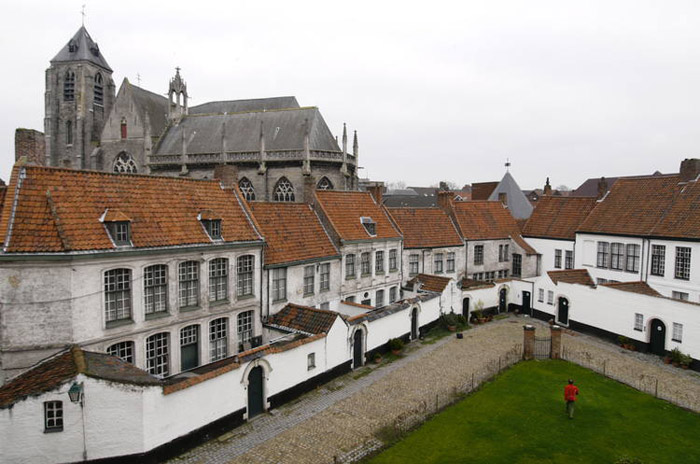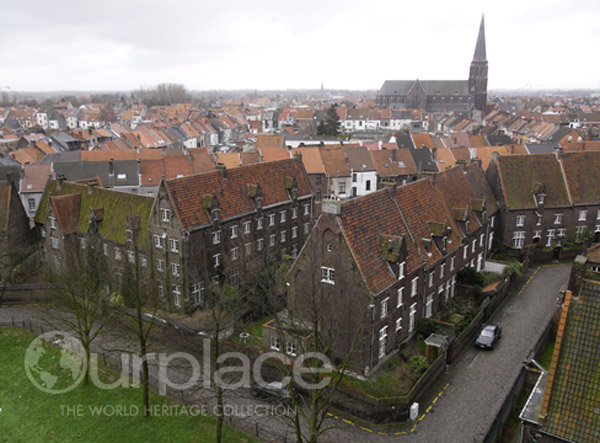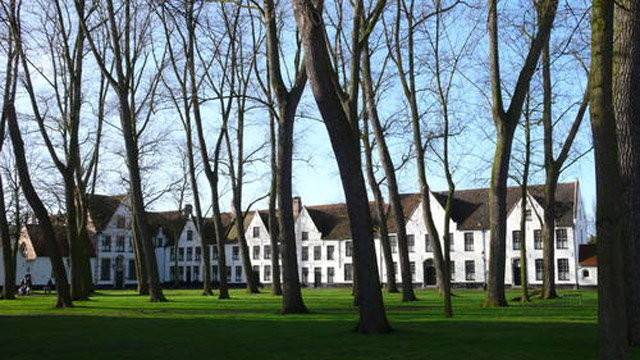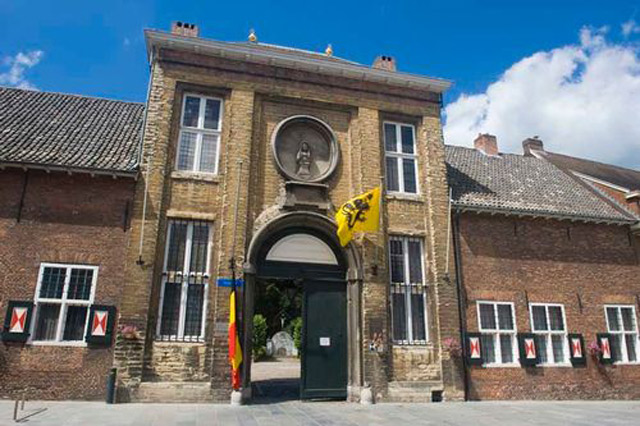Beguinages monasteries of Franders
The Unesco Scientific, Educational and Cultural Organization has recognized the Babguinages Monastery of the Franders of Belgium as a World Cultural Heritage in 1998.

The Beguinages are a religious order founded by nuns . The nuns of this religious congregation are not as completely free as other religious orders. They dedicated themselves to the Lord but still lived a secular life, even if they had to follow the mandatory rules when they joined the Beguinages.

The Beguinages began to be built and formed around 1200 by a group of women independent of their religion at that time. Shortly after the formation of this religious order, it developed rapidly in the region and spread to many other areas of northwestern Europe from the 13th to the 16th centuries.

The Beguinages nuns live in Beguinages monasteries. These monasteries are a complex of many architectural buildings such as houses, chapels, working houses, public garden areas . It can be said that these monasteries are self-contained buildings with many prices. outstanding treatment of planning as well as the combination of religion and tradition. In order to serve a secluded life, most Beguinages are fully built with space from houses, clinics, to working areas, common garden areas . guaranteed so Beguinages monks can live and work here.

The nuns of the Igguinages can say that the first women proved their independence when initiating a form of religious participation but did not completely leave their normal lives. At that time, this form of participation was called a semi-religious development step. Different from the life of the priestess who escaped will serve the Lord until death and completely leave the worldly life. The secular nuns of Beguinages can still work, take care of patients, teach . they dedicate themselves to the Lord but can still take care of themselves and their families when needed. The nuns of the Beguinages can be an unmarried woman, or leave her husband or widow . maybe a wealthy person or a homeless person can join. Because of this openness and simplicity, the lines of Beguinages were developed in Europe.

Each Beguinages monastery has a head called the Grande Dame . Grande Dame is elected by term by a council of heads of Beguinages monasteries. The lives of Beguinages are generally simple, modest and self-contained. Although they may be in real life, they have money but when they joined the Beguinages, they also live like others. Despite the general provisions of the religious order, the monasteries have their own rules about prayer times, how to pray, how to manage as well as take care of the sick . and the nuns are forced to obey follow these rules.

Beguinages monasteries generally receive support from the church organization even though the congregation is not entirely free. Besides, Beguinages monasteries are also endorsed by the people because most of the monasteries and nuns of this religious community wholeheartedly help the poor. In all monasteries, there are clinics, disease prevention rooms for the poor, and the homeless do not have money for medical treatment. In some monasteries also specialize in treating people with leprosy, leprosy. Besides healing, nuns also teach poor people how to embroider or weave cloth so they can earn money to support themselves.

The Beguinages were formed during the 13th century and developed from the 16th to the 17th century. Beginning in the mid-16th to 17th centuries, the Beguinages began to weaken due to regional political crises and others. the church's problems emerged in the fact that the church was concerned about the widespread influence of Beguinages.
By the 18th century, this congregation was almost lost when the area merged into France. Different management policies have left the few Beguinages monks left to leave the land. Beguinages monasteries are reclaimed to serve public activities. Some of them are acquired by the private sector for their own purposes.

By the nineteenth century, the remaining Beguinages monks gathered and were determined to rebuild the convent and reclaim the right to manage the monasteries. After much effort they also succeeded. In 1998, the Unesco organization recognized 26 monasteries of this monastery as a World Cultural Heritage . However, among the remaining 26 Beguinages monasteries many monasteries were degraded, others were partially damaged by the war. Some monasteries were destroyed during the war and were rebuilt according to the original architecture, others are still waiting to be restored and renovated.
Beguinages monasteries are not only a historical, cultural and religious demonstration, but these buildings are also evidence for modern urban planners to learn about construction and planning of ants Medieval architecture.
- The monasteries are unique in the world
- Discover the world's oldest Buddhist monastery
- Beautiful moments in the mysterious land of Bhutan
- The whip revealed the monastic life in the Black Death pandemic
- Explore sacred lands that forbid women and children
- Monastery of Saint - Gall (Switzerland)
- Exploiting copper, discovering an ancient monastery 2,600 years
- Leonardo da Vinci and secrets not everyone knows
- What priceless sword warrior does the Viking warrior possess?
- Meteora monastery complex
- Detecting the skeleton of a monk is cut off meat before being buried
- 500-year-old mystery wand launched
 Suzhou classic bonsai garden - China
Suzhou classic bonsai garden - China Chau Nguyen Dynasty
Chau Nguyen Dynasty Thai Son Mountain - World Wonder
Thai Son Mountain - World Wonder Ancient villages of Shirakawa-go and Gokayama
Ancient villages of Shirakawa-go and Gokayama